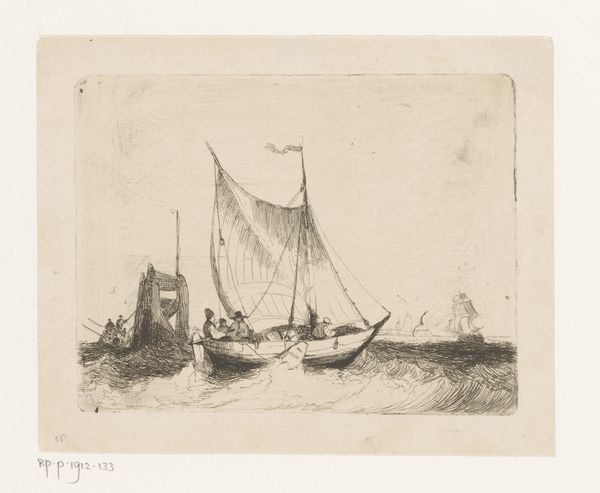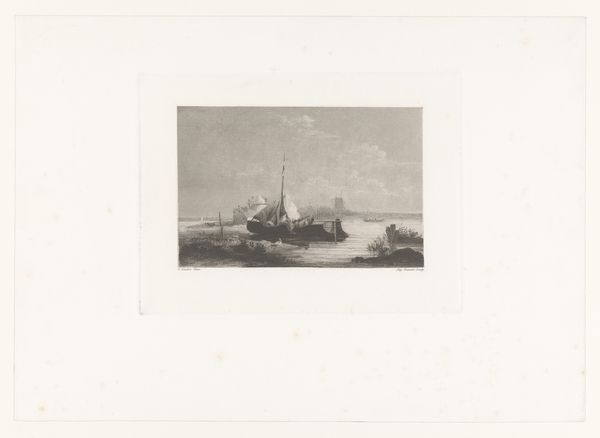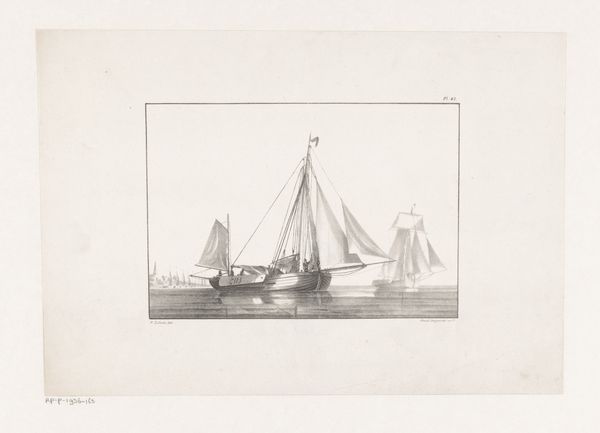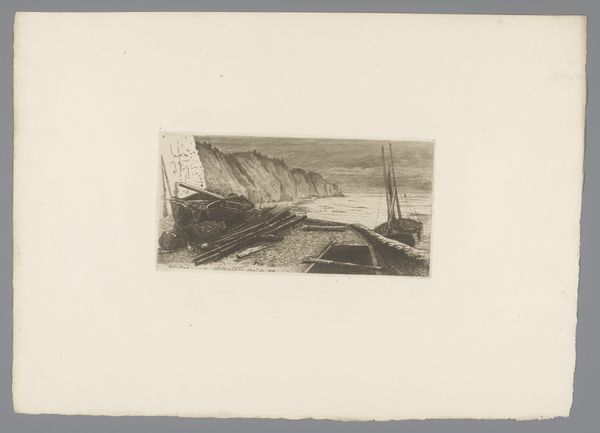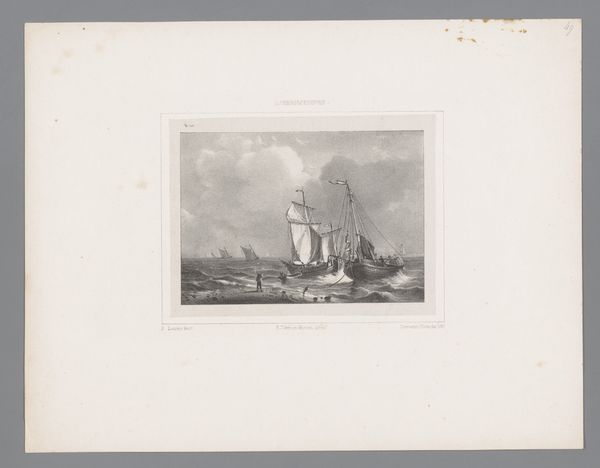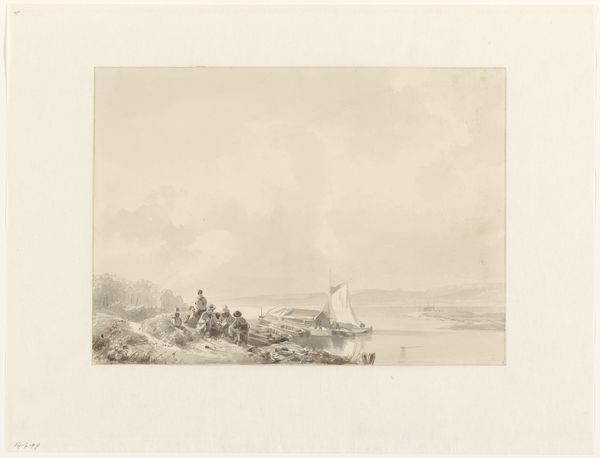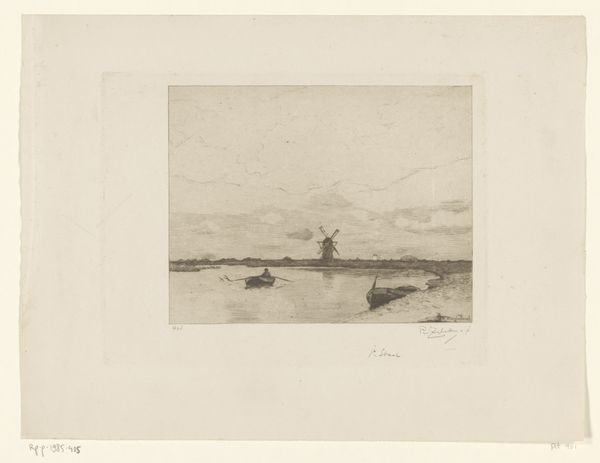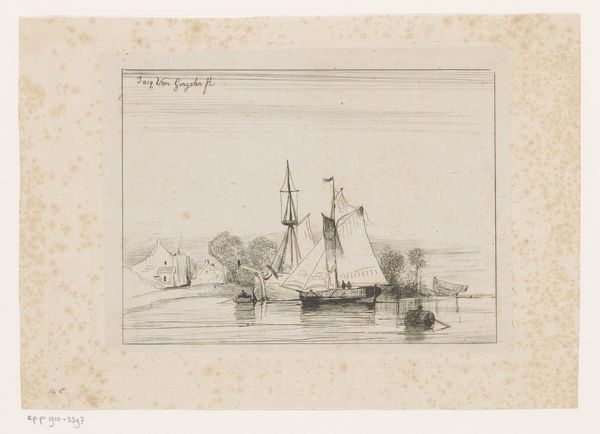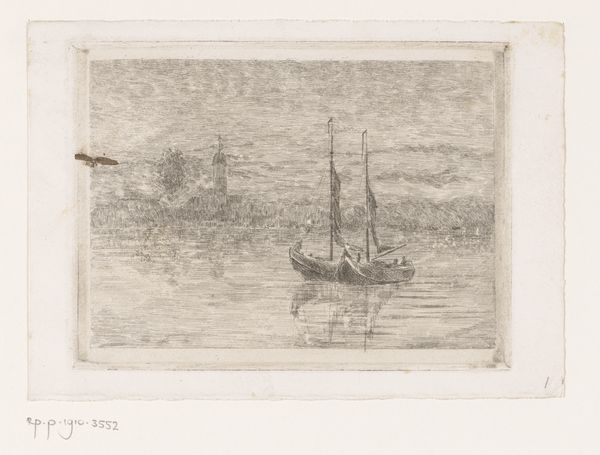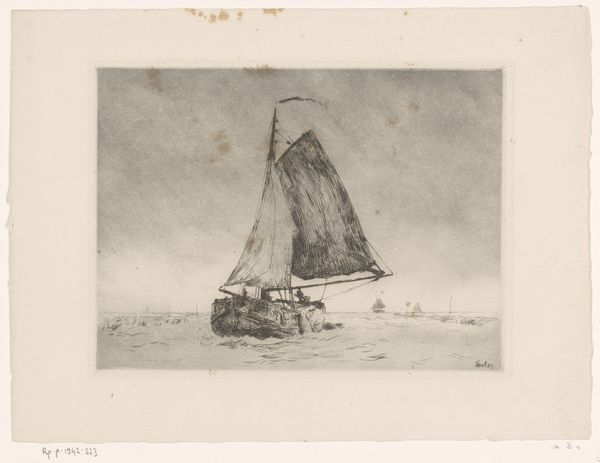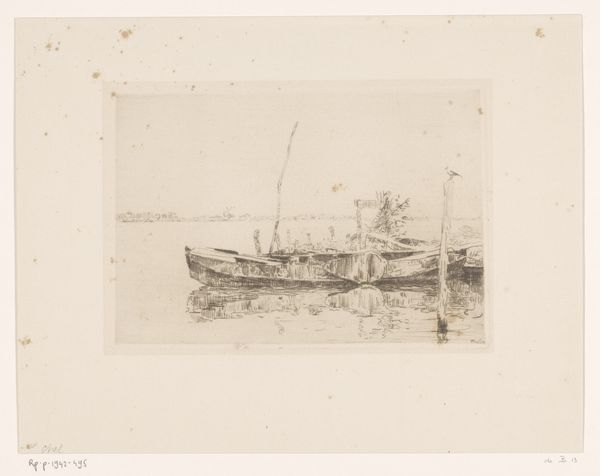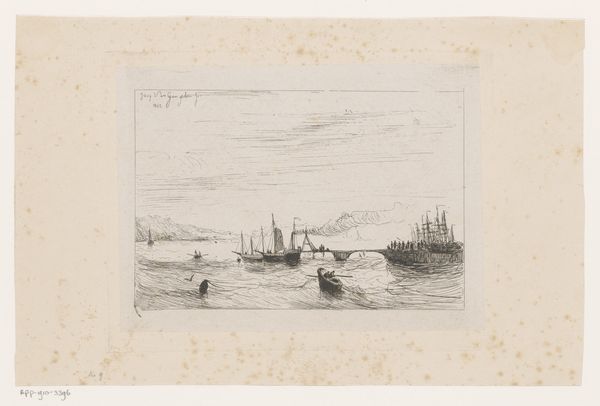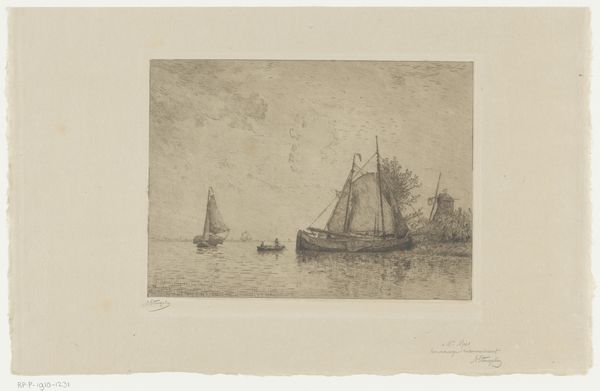
drawing, print, etching
#
drawing
# print
#
etching
#
landscape
Dimensions: height 180 mm, width 235 mm
Copyright: Rijks Museum: Open Domain
Editor: Here we have Jacques Van Gingelen’s "Coastal Landscape with High Rocks and Ships in the Water," an etching from 1842. It has a wonderfully stark, almost somber mood, with those ships dwarfed by the imposing cliffs. How would you approach an interpretation of this piece? Curator: I see an explicit interest in the labor that shaped both the landscape and the scene depicted. Note how the rough texture of the rocks, likely rendered using varied etching techniques, emphasizes the physicality of the land itself, shaped over vast timescales through geological processes. Even the addition of the ships illustrates how human labor interacts with this landscape. Editor: So, you see the etching technique itself as a key part of understanding the work? Curator: Precisely. Consider the division of labor implicit in printmaking at this time. The artist might not be the one preparing the plate or operating the press. The print becomes a commodity. How does that potentially cheapen landscape, or how might that disseminate new visualisations of national and personal identity? Also, what's the material itself? The paper quality, the ink—these inform how widely it could circulate, and its cost of production and consumption. Editor: That's fascinating. I hadn't considered how the materiality of the print would have dictated its role as an artistic good. Thinking about the artist's role as less about self-expression and more as another form of labor challenges my understanding. Curator: Exactly. We can then also explore who commissioned such landscapes and who were the consumers. By whose hands would this have circulated? Editor: This perspective offers so much food for thought. It pushes beyond just admiring the scenery to considering the whole network of production and consumption that brought the image into being! Curator: Agreed. It helps reveal the complex relationship between art, labor, and societal structures, as a lens of history and material analysis.
Comments
No comments
Be the first to comment and join the conversation on the ultimate creative platform.
